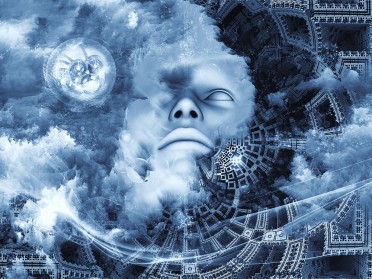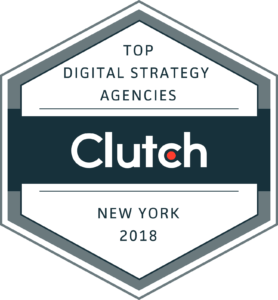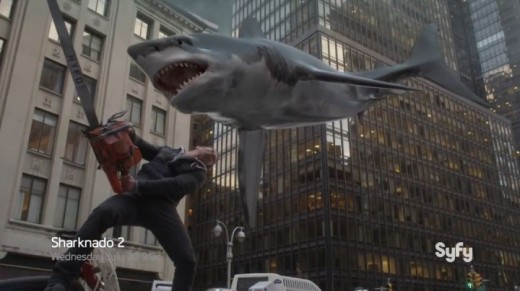
By 1995, David Carson was the poster boy for an avant-garde and increasingly, subversive direction that graphic design was headed. He had built a global following of design school kiddies by bucking the traditional "ad-man" approach previously taken by Ogilvy, Burnett, Brownjohn and others with regard to clever, effective and readable advertising. Much like the controlled chaos of the Deconstructivists before them, in the cyclical karmic wheel of creative expression, Carson (and arguably Segura, Brody and others) had taken accepted graphic design in a direction that tore up the rules and started over. Their sauce was the gateway drug for Sagmeister and his ilk in later years.
I recall attending a HOW Conference in Monterey, California, where Milton Glaser, Bob Gill and their colleagues were publicly seething at Carson's new found popularity. These arguably brainer, and certainly more seasoned road dogs of the graphics industry, were, for the first time, being ignored by the graphic masses for a new, hot little surfer boy (who openly admitted he just fell into the industry like like a leaf into a big pond of ducks). There were lines around the block to have his new book, "The End of Print: The Grafik Design of David Carson", signed by the man himself.
For the ad-men, this was a moment of reckoning. At the Monterey HOW Design conference Bob Gill was more vicious and crabbier than usual. The unsuspecting rock stars of the past were now being exorcised by the new punk regime. The Sex Pistols were coming - and there was nothing that Jethro Tull and Yes could do about it. A creative tool called the computer, had replaced hand-cut rubylith and type.
Digital printing would slowly all-but-kill Gutenberg's printing press as a cheaper solution to your printing press expert, who was always there on press to get your colors just right. The industry of graphic design was becoming cheaper. We began to believe "shitty" was acceptable, and various economic factors and corporate budget cuts didn't help matters either. Software took away the human touch, tablets would later take away the notepad, and being digital began to slowly take root - a fungus to wash over the senior graphic Luddites, like a creeping red tide. An in-depth review of this historical moment in printing can be read on articles from https://www.littleprint.com.au, the review highlights key moments in the transition to digital. A clever and eye-opening read for millennials who have missed out on seeing the changes first hand.
A dear departed friend of mine once quipped, "What happens when everyone has a website?" Now that's a bit naive, but I get his point. While the convenience of smartphones and tablets has pushed us into a post-PC world, where expansive experiences are more desirable and useful than a website. Websites, by definition, are just a group of connected pages regarded as a single entity, and they are practically free if you look hard enough. The modern digital branded experience is much more.
Mobile devices and likely the upcoming wearable industry will continue to steadily infiltrate and replace the experience of a single website for an organization and brand's digital expression. In recent years, the concept of social media has raised the stakes by creating two-way conversations in real time with real expectations from your audience. We prefer to not be removed from experiencing one form of entertainment or educational media to sit down at a computer and look up a website. We want to experience all things collectively and collaboratively with our friends, and the distraction of a website, as we once knew it, is not nearly complex enough to satisfy our desires.
...Back to Carson and the End of Print. He later claimed that he wasn't trying to infer that the print industry was dead, but those who had just raised the flag of technology and the new coming internet revolution didn't care. His mostly unreadable style and grungy approach to design was necessary. It rocked the industry boat - and as music, fashion and entertainment fell into line - it forced the rules to change. The web would later become a viable and uniquely positioned means of both creative expression and a way for businesses to connect to consumers in sometimes profound ways - the world's most accessible art show and trade show under the same roof. The Nerds had their revenge while the ad-men were left to their martinis, suits and stories.
The Mechanism recently retired the word "website" from our vocabulary. It’s too close-minded and obvious a concept to exist as an agency without discussing the future of an integrated digitally-branded experience. In fact, we were 13 years ahead of our time when we started The Mechanism and used “From Media to the Medium” as our tagline. We believe that a website has always been a thread in the expanding tapestry of brand expression. We understood from the start that everything begins from the brand outwards, and given the technological tools that were available then (and are available now) the implementation of an idea in any Medium wouldn’t be the problem - it would be the enormous and interconnected creative collaborative that would be required to see through the changing variety of media delivery mechanisms.
The “website” as we all know is less important than what's coming next. Website development was the catalyst, a "blip" towards an interconnected omnipresent, ever-communicating "Singularity". We will soon live with systems that plug into an artificial or ambient intelligence to manage your life, curate your interests, drive a vehicle, keep track of your day to day travels and never force you to remove yourself from an existing experience to use a website to research what the Network will already know you’re looking for. The next generation will be the “Mighty Untethered”, ubiquitously connected to a Universal Machine. You and your friends and colleagues interests will be part of the system, and as they change, so will your personal experience to match your tastes. Diseases, dangers, economies and civilizations will be repaired on a global scale due to mass shared information and the artificial intelligence to be gained from it. Privacy will continue to suffer, but it has since the first time you signed up for a college loan.
Web developers, this is your moment of reckoning. When nearly everyone can make a peanut butter sandwich, it's not just time to suggest a banana - it's time to introduce it to the 10,000lb gorilla in the room.
Sitting on the couch, plugging-in and tuning out, growing fat, eventually growing tentacles and remembering what it once was like when we were knuckle-dragging Homo sapiens is a possible future. Or hopefully, our wearables, implants and attached digital devices will feature new, usable interfaces and non-intrusive experiences enabling us all to once again perceive the world around us with better clarity and understanding of the human experience.
The Web is dead, long live the Medium...
 We did it again! The Mechanism was highlighted as a top New York City Agency of 2018 by Clutch. Last week, Clutch published their NYC press release that evaluated the top companies in the digital agency, IT, window graphics Marketing, and Development space.
We did it again! The Mechanism was highlighted as a top New York City Agency of 2018 by Clutch. Last week, Clutch published their NYC press release that evaluated the top companies in the digital agency, IT, window graphics Marketing, and Development space.






